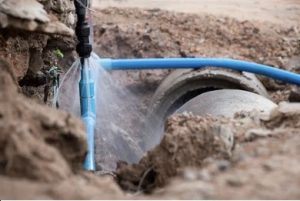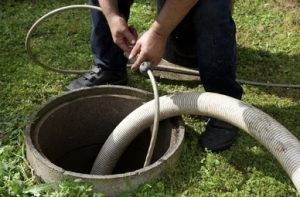All About Septic Tank: Septic System Problems and How to Avoid Them
When buying, selling, or designing your dream house, you must consider the septic system. Usually, the backyard is where your septic tank is located. You should ensure that it is working in its top condition or at least minimal maintenance to make it last your lifetime stay in your house. You don’t want to sell or buy a defective septic tank system or build a house without a completed and operational septic system. Do you? Further read and learn more about the common septic tank problems and how to avoid them.
What is a Septic Tank?
A septic tank is a chamber or compartment where liquid or waste like feces, urine, and other waste matter is collected for decomposition processes. The septic tank is made of concrete, plastic, or building construction materials that effectively contain the waste matter.
The waste matter undergoes decomposition and disintegration by bacterial activity.
Waste Disposal
Waste has always been a problem, even from ancient history. In the early civilizations, most inhabitants lived near water sources like rivers, lakes, streams. Water is an essential element for basic human survival such as farming, hygiene, animal rearing, and the like. The simplest that humans do to eliminate their waste is directly dumped into the top water sources like rivers, streams, and lakes. Due to the rising population, waste has polluted water sources. That is why laws were written to prevent the pollution of river sources.
Diseases and contamination may come from human waste. Because of technological advancements, there is an improvement in waste disposal methods.
The septic tank system is hygienic and prevents the spread of diseases. The houses now were built farther away from river banks and receive basic water needs by pumping and running through pipes and water lines. By then, waste matters are now separately dealt with the different septic tank designs.
Parts of a Septic System
In urban or suburban areas, city or municipal areas, the government has laid out sewage systems where household and building structures dump their waste. This waste material supposedly goes to the treatment system. There are four parts of a septic system. In that order are piping from the house, septic tank system, drain field, or dispersal system.
Piping outlet. The piping carries the wastewater from the house going to the septic tank.
Septic Tank. The septic tank accepts the wastes coming from the house through the pipes. It is the crucial component of the septic system, where all the wastes undergo initial treatment. Usually, septic tanks are buried underground and should not mix with other house water systems to prevent contamination. The septic tank parts are the wastewater inlet, access risers, pump chamber (optional), maintenance hole, wastewater tank, and wastewater outlet. The wastewater inlet is usually made of a T-pipe. When the chamber starts to receive the wastewater, the solid parts of the waste go to the bottom, and the lighter parts of the waste like grease and oil and light particles float to the water surface, which we now call scum. On the contrary, we call the solid part of the wastewater as sludge.
Some septic tank designs are made of a single chamber, and some are made of two or more chambers, depending on the application of the designed chamber or tank. The number of occupants or the number of waste utilities of the house like toilets, sink basins, and showers will determine the size of the tank. Access risers are holes installed above the septic tank to maintain the septic tank system. The pump chamber is optional and is not necessary as per the local state building code law.
Drainfield or Dispersal System. The wastewater that is released is called effluent. It is released through a septic outlet ejected to the field by several pipes to the soil for further wastewater treatment. The t-outlet piping separates the water coming out of the septic tank from the sludge and scum. After that, the wastewater will undergo dispersion and filtration by the ground soil.
What are the Types of Septic systems?
The septic system varies in size, location, landscape, elevation, and local prohibitions. Its corresponding design will depend on the type of system since it can vary due to different factors such as soil condition, the lot size, climate, water sources around the periphery, and weather factors.
The Two Major Types of Septic Systems
To better understand the septic system. Let us identify some types of septic systems.
Conventional systems
- Gravity System. This septic system uses gravity to move the waste from the source to the septic tank to the dispersion outlet. The pipes are built by inclining angles, enhancing fluid flow. It is also the standard type of system that you can see in early designs. Wastewater moves by natural flow like water streams and rivers.
- Pressure Distribution System. This type of design uses a pump device to distribute the effluent to the drain field evenly. This system is effective and is mainly used by most new septic system designs.
Alternative Systems
- Aerobic Treatment System. This system uses external gas to break down solid wastewater parts that are difficult to break by using usual natural decomposition methods.
- Mound System. This system uses a second chamber and a pump to move the effluent water to an artificial mound that is drained to the soil. There are specific prohibitions to follow this system to maintain proper drain from the earth to the ground.
- Sand Filter system. It is a system that uses raised sand filters wherein the effluent flows through a chamber with a pump and runs effluent through the sand filter.
- Other systems. You use these systems for climates that are extremes. An example is the evapotranspiration system. In this system, the effluent never reaches groundwater since the drain field is water-tight. Evaporation is key to the system. It is effective in arid climates.
Problems and Prevention Tips

Source: Stocksnap.Io
Since we now know the parts and functions of septic tank systems and the types of septic systems, we can now understand the problems we may encounter. Let us identify the issues, the impact, and the prevention that we can take.
Unusable Septic System
The primary cause of a septic tank getting unusable is an unmaintained septic system causing a broken pumping and piping system leading to blockage and overflow. Regular inspection of the septic system is significant to replace any leaky and broken pipings.
The cost is much less than replacing it with a new system. It is to avoid legal liabilities, and it may decrease the value of the property. It is also an inconvenience to the tenant or the owner who uses the bathroom, toilet, and shower.
Health and Environment Issues
When a septic system is not functioning correctly and does not receive appropriate treatment as it should do, it will result in certain diseases to the tenant and the surrounding areas.
A well-functioning sewage system can avoid contamination, diseases, bacteria, and viruses contaminating water sources. A person can at least use ten to fifty gallons of wastewater daily. With poor maintenance, waste materials can go below the groundwater level and contaminate drinking water sources of man and animals. If the septic system is adequate, the drinking water sources will be safe and free from harmful diseases.
Frequency of Inspection and Maintenance
Septic tank preventive maintenance is essential in every septic system. For typical septic design standards, it is crucial to do an inspection every three years. Whereas, for septic systems that have pumps, mechanical switches, or mechanical parts, review by your septic system service provider once a year as per your record may be necessary. Safety measurements are essential when doing an inspection and maintenance service. Take note of the timing and estimate, such as when the next maintenance service is due. The service provider will check for sludge and scum levels to determine the frequency of maintenance. Rechecking of leaks and piping cracks is necessary to determine if it needs replacement rather than repair.
Wrapping It Up

Source: Stocksnap.Io
Septic tank preventive maintenance plays a significant role in keeping your septic system in good health. It is vital to keep track of inspection reports. Access if the holes are still in good condition to avoid any leakage. It might seem unnecessary, but checking the toilets, sinks, and drains if there is any backflow or if they are efficiently working will help maintain your septic system. Hire a professional septic cleaner to check the measurement of scum and sludge, and provide dependable pumping solutions.
From all the information we know, it is necessary to do regular and timely maintenance on your septic tank system. If you still worry about what you must do with your septic system, it is better to hire a septic expert to check the inspection and functionality of mechanical switches and movable parts. The cost of maintenance does not outweigh the cost of living and the price of a clean environment and safe water sources. Septic tank preventive maintenance is still in keeping a safe and healthy septic system.

